life
Latest
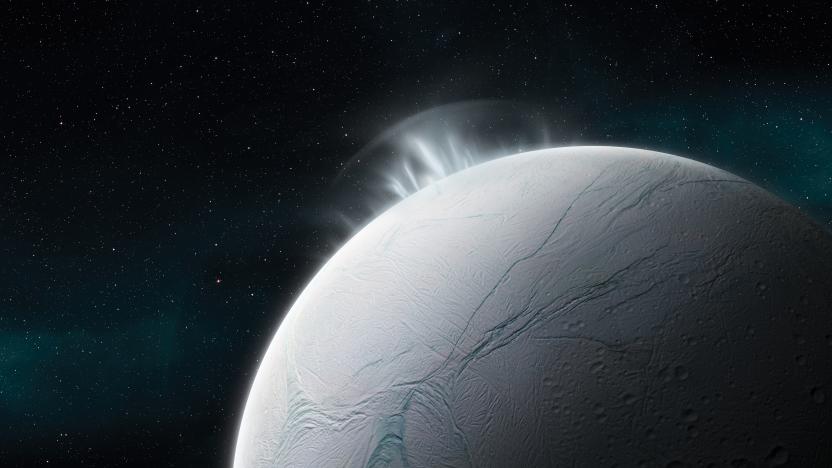
Saturn’s moon Enceladus could support species similar to Earth
Saturn’s moon Enceladus has phosphorous. The finding came from recently analyzed icy particles emitted from the natural satellite’s ocean plumes, detected by NASA’s Cassini spacecraft. The discovery means Enceladus has all the chemical building blocks for life as we know it on Earth. “This is the final one saying, ‘Yes, Enceladus does have all of the ingredients that typical Earth life would need to live and that the ocean there is habitable for life as we know it,” Morgan Cable, astrobiology chemist at NASA’s Jet Propulsion Laboratory, told The Wall Street Journal.
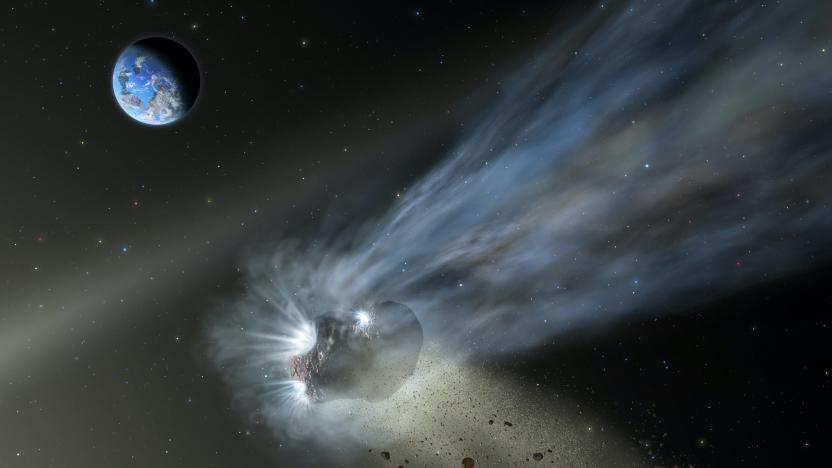
Comets may have seeded Earth with life-supporting carbon
A snapshot of a comet carrying carbon as it zipped past Earth in 2016 is helping NASA learn more about the origins of life.
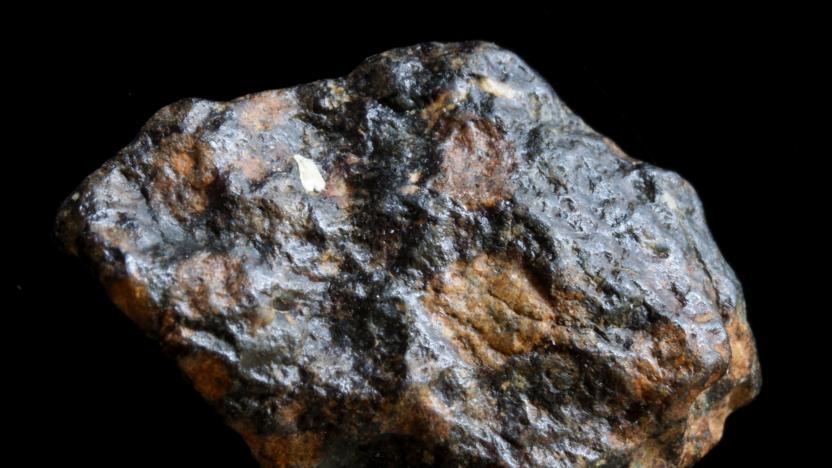
Early Solar System meteorites might explain how Earth got water
Scientists have discovered that meteorites from the early Solar System held water until relatively recently, possibly contributing to life on Earth.
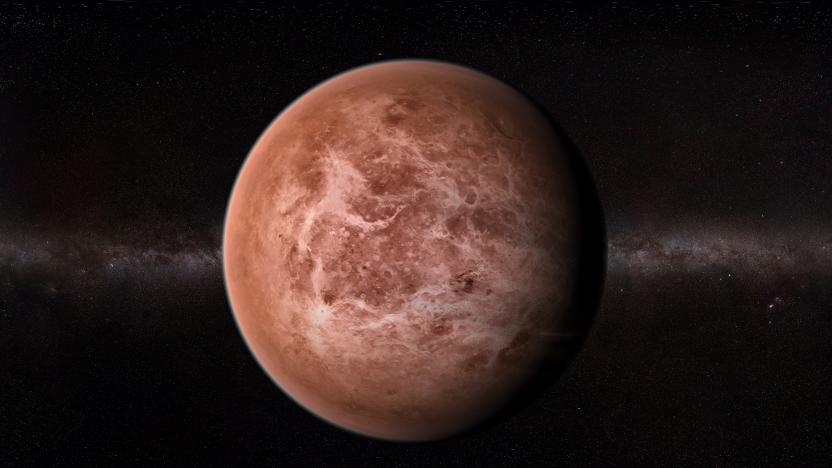
Astronomers detect possible signs of life in Venus's atmosphere
Some astronomers believe phosphine detected on Venus was produced by living microorganisms.

A tiny space rock holds clues about the evolution of life
NASA researchers believe meteorite Asuka 12236 holds clues about the evolution of life as we know it.

There could be as many as six billion Earth-like planets in our galaxy
The findings could have a big impact on future space missions.
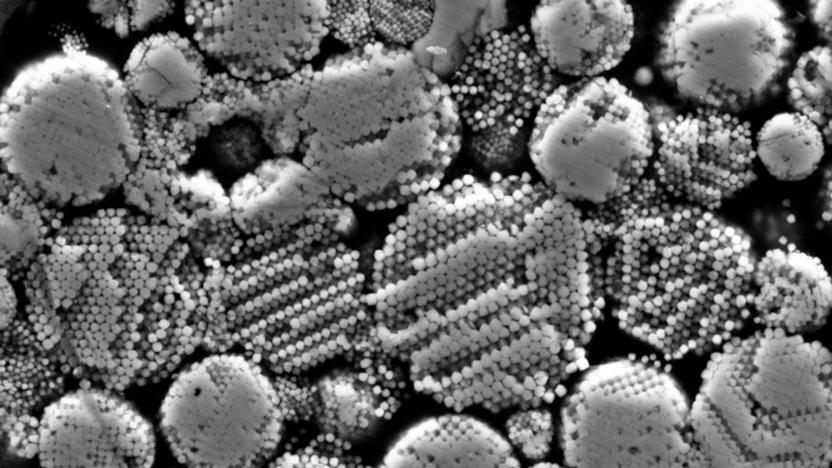
3D atom mapping helps investigate the origins of life
Scientists have used 3D atom mapping to find evidence of life-supporting fluids in a meteorite 4.5 billion years old.
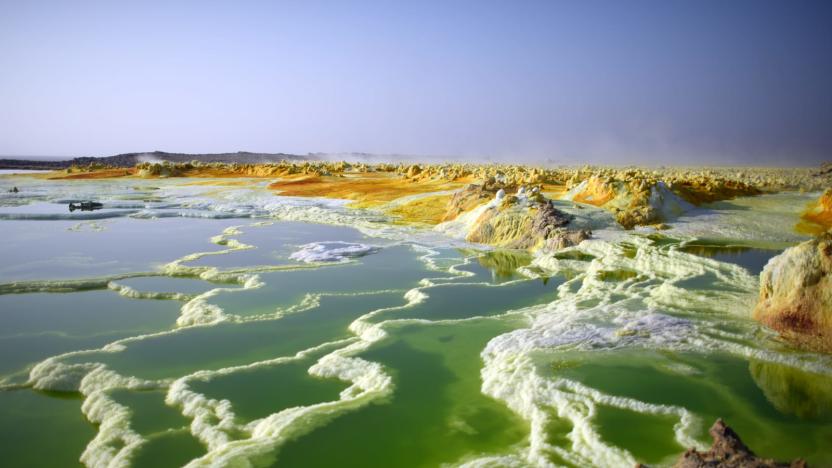
Study casts doubt on the chances of life on watery alien planets
Scientists searching for habitable planets often see the presence of water as a key sign, but they might not want to raise their hopes too high. A recently published study has indicated that there was no clear evidence of extremophiles (life that can survive extreme conditions) in Ethiopia's Danakil Depression, home to some of the world's most acidic, saltiest and superheated water. In other words, the mere existence of water isn't enough -- the conditions have to be at least slightly conducive to life. Accordingly, water that was 'just' very salty included numerous forms of extremophiles, including several newly discovered examples.
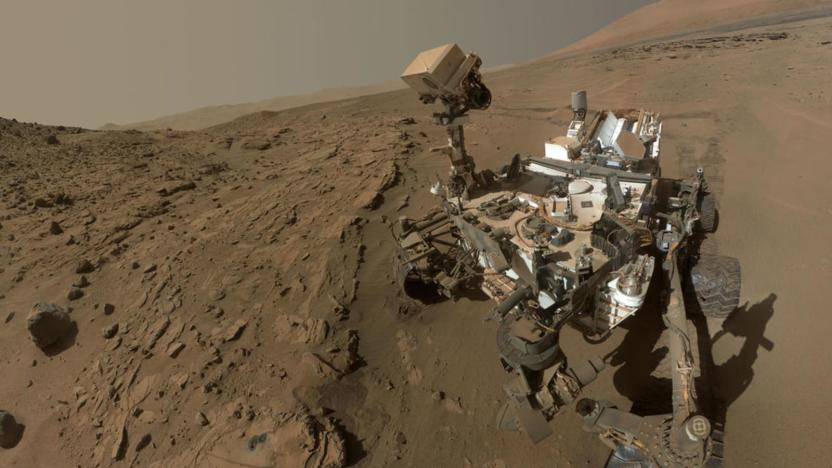
Curiosity rover finds gas levels on Mars hinting at possibility of life
It's easy to get jaded about potential signs of life on Mars, but a recent discovery might raise eyebrows. The New York Times has learned that NASA's Curiosity rover has detected "startlingly high" levels of methane -- the gas typically produced by life as we know it. The quantities are still tiny at 21 parts per billion, but that's three times the amount Curiosity spotted during a surge in 2013. The rover's operators were reportedly surprised enough to pause regularly scheduled studies to obtain follow-up data, with the additional findings slated to arrive on June 24th.
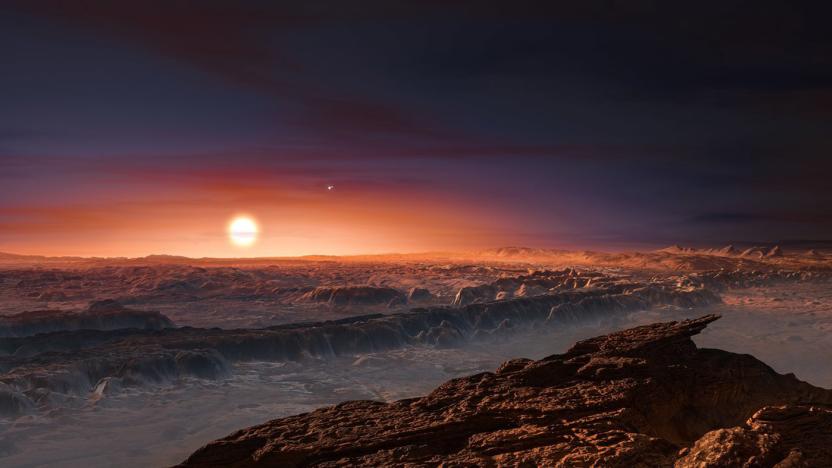
Mini-Hubble will scan dim stars to see if they can support life
It doesn't take hugely expensive space telescopes like the Hubble and future James Webb Space Telescope to hunt for habitable exoplanets. NASA and the University of Arizona will launch a small telescope the size of a cereal box called the Star-Planet Activity Research CubeSat, or SPARCS, in 2021. The aim is to find so-called M Dwarfs, stars 20 times dimmer than our sun, and see if they emit too much radiation to support life on other worlds.
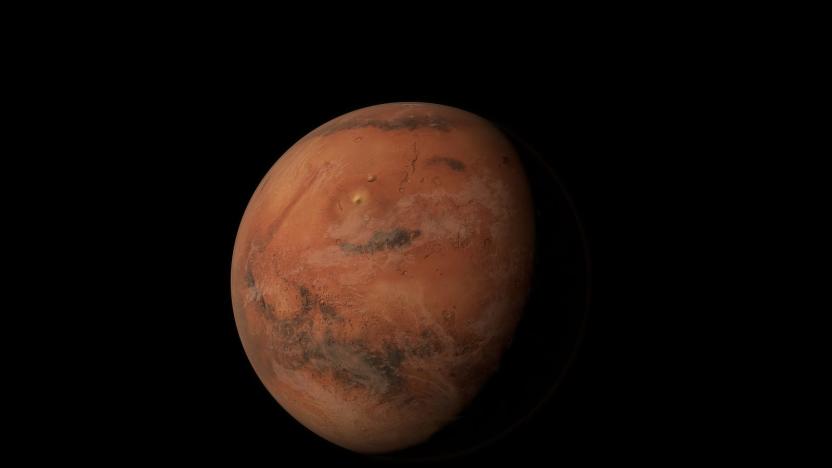
Researchers say life on Mars may have had a better chance underground
Mars is now a dry, cold planet, but whether it once supported life is still an open question. On Earth, areas that once hosted long dried-up bodies of water have been a rich source of evidence of ancient life and because of that, those sorts of areas have been the target of searches for ancient Martian life. But a paper published recently in Nature Geoscience says that might not be the best place to look.

Leaked HTC U11 Plus video reveals a bigger battery and screen
A hands-on video featuring the upcoming HTC U11 Plus has been leaked to Facebook, showing that the flagship phone will be available in a translucent option, as well as black and silver. Evan Bass, who's known for leaking tech specs, also confirmed the translucent option in a tweet. The video has since been taken down, but the inevitable copies still available online show the U11 Plus will have a six-inch display, 4,000 mAh battery and 128GB of storage (other storage options, if any, are yet to be confirmed). A closer look also reveals a coil beneath the shell, which could indicate wireless charging capabilities.
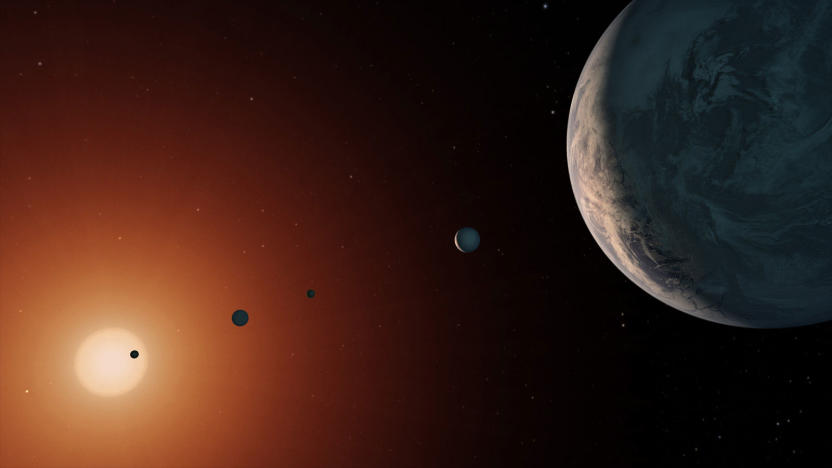
The TRAPPIST-1 star system may be too old for life
We hate to further quash hopes that the TRAPPIST-1 star system can harbor life, but... it's not looking great. Researchers have determined that the dwarf star is between 5.4 billion years old and 9.8 billion years old, or considerably older than the 4.5 billion years of the Solar System. That age isn't necessarily bad, but it increases the likelihood that any life-supporting planets around TRAPPIST-1 lost their atmospheres and water to billions of years of high-energy radiation. And even if their atmospheres were thick enough to block the radiation, there's a possibility that a Venus-like runaway greenhouse gas effect cooked the planets' surfaces.
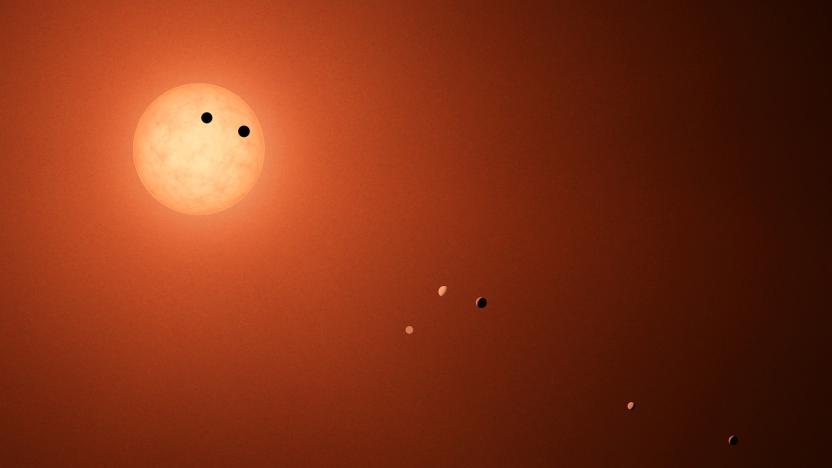
Trappist-1 planets may have formed from chunks of melting ice
After its discovery, Trappist-1 instantly became one of the most interesting stars in the Milky Way, with seven Earth-sized planets including three in the life-supporting "habitable zone." But, why did the planets form in such uniform Earth-like sizes so close to their star? Astronomers from the University of Amsterdam believe everything can be explained by small chunks of ice that clustered in the region where water just starts to freeze. Eventually, enough chunks clotted together like plasticine, forming worlds just inside the "ice zone" -- the perfect spot for life.

Scientists take a big step toward creating custom organisms
Scientists dream of using custom organisms to fight illnesses or even build computers, but there's a problem: it's difficult to make the sweeping genetic changes that would give you exactly the lifeform you need. To that end, researchers have found a way to rewrite "large stretches" of genomes with synthetic DNA. The team modified salmonella bacteria by using step-by-step recombineering (that is, exchanging sequences between similar pieces of DNA) to patch in yeast-grown genes that were "amplified" to boost their quality. The result was salmonella with 1,557 replacements spread across 176 genes -- a huge change for a relatively simple organism.

Most habitable planets may be completely covered in water
When you imagine what a rocky, habitable planet looks like, it's easy to picture an alternate Earth where land and oceans exist in an ideal balance. Unfortunately, that's not necessarily how it will pan out in real life... in fact, you might be surprised if there's land at all. University of Barcelona researcher Fergus Simpson has published a study suggesting that most planets with any significant amount of water are likely to be completely (or almost completely) submerged in it. He ran computer simulations accounting for numerous factors in a planet (such as the deep water cycle and erosion), and most with substantial water levels had an above-water land mass of less than 10 percent -- well below Earth's 29 percent.

Scientists find a low-cost way to build genomes from scratch
To put it mildly, sequencing and building a genome from scratch isn't cheap. It's sometimes affordable for human genomes, but it's often prohibitively expensive (hundreds of thousands of dollars) whenever you're charting new territory -- say, a specific person or an unfamiliar species. A chromosome can have hundreds of millions of genetic base pairs, after all. Scientists may have a way to make it affordable across the board, however. They've developed a new method, 3D genome assembly, that can sequence and build genomes from the ground up for less than $10,000.

Dwarf star's atmosphere holds the ingredients for life
One of the biggest questions in the search for life in the universe is a simple one: how common are the ingredients needed to make life-giving planets? They might be more widespread than you think. Astronomers have discovered that a white dwarf star in the Boötes constellation, WD 1425+540, has an atmosphere chock full of the carbon, hydrogen, nitrogen and oxygen needed for life as we know it. The researchers believe that the star picked up these elements after ripping up a small rock-and-water planet when it veered too close. The finding suggests that rocky planets like Earth don't need to be born with life-giving material -- even a "dry" example orbiting close to its star might pick up those substances through one of these stellar impacts.

'Coloring Book' is the first streaming-only album up for a Grammy
Meghan Trainor announced the nominees for this year's Grammy Awards on Monday night. Beyonce, deservedly, is leading the field with 9 nominations followed closely by Drake, Rhianna and Kanye West who all have 8 apiece. But more surprising is the category for Best New Rap Album for which Chance the Rapper's Coloring Book is nominated. This is the first time that an album available only through streaming services has earned a Grammy nod.

Time's Life VR immerses you in documentaries
There's a certain detachment to watching a conventional documentary. You may understand and appreciate what you're seeing, but you'll never quite get a sense of what it was like to be there. Time, however, believes it can do better. It's launching a Life VR brand that will use virtual reality to give you more immersive view of historic events and unusual experiences. One of the first examples includes Defying the Nazis (above), a parallel to a similarly-named Ken Burns documentary -- you'll see what it was like to take asylum seekers from occupied France to the US. Others include Lumen, a self-guided meditation exercise, and Fast Ride, a view of what it's like to drive the classic Mazda 787 race car at Laguna Seca.







